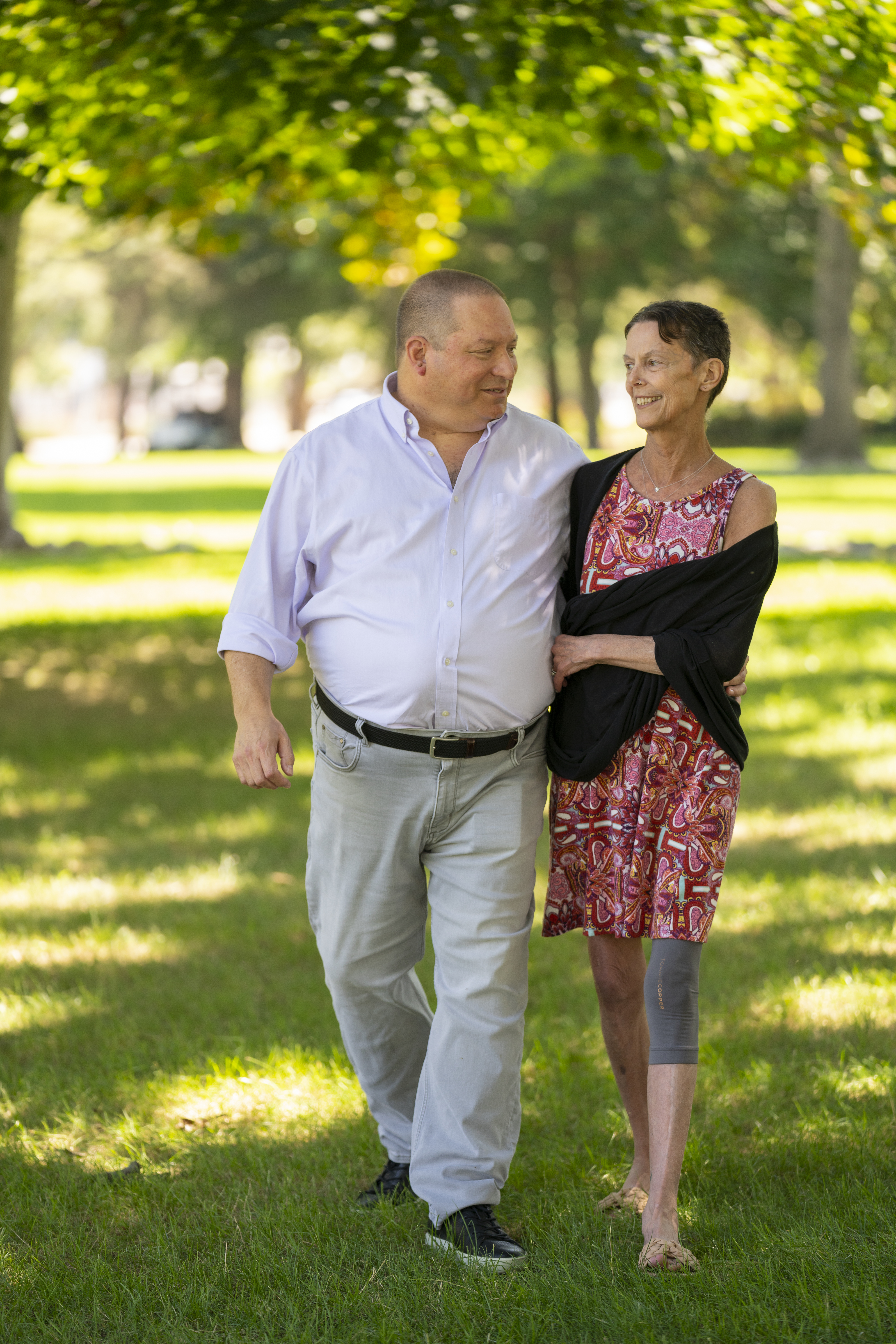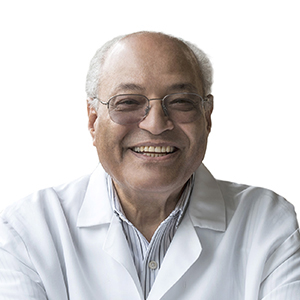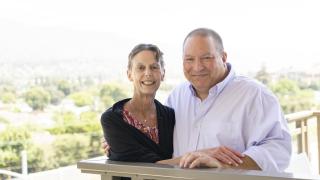Life with type 1 diabetes can be difficult. For Susan Weinberg, now 60, it was nearly impossible.
An education specialist from Santa Monica, California, Weinberg had been living a perfectly healthy and normal life. “I was an avid exerciser and organic eater,” she says. But around 1990, Weinberg, then in her late twenties, awoke one morning with blurred vision, numbness and an inability to speak clearly. Afraid she might be having a stroke, Weinberg rushed to the emergency room, where she soon learned her symptoms were caused by type 1 diabetes. At the time, she recalls, it didn’t seem like such a big deal.
“I had to take two injections [of insulin] a day,” she said, matter-of-factly. “It was like taking a shower.”
The “shower” soon became a flood.
A Dozen Insulin Shots Daily
Before long, those two injections were not enough to control Weinberg’s condition. Eventually, she required up to a dozen daily shots, “every hour and anytime I ate anything,” she said.
Nearly 2 million Americans live with type 1 diabetes, an autoimmune disease in which the body’s immune system destroys the insulin-creating beta cells in the pancreas. Without those cells, the body cannot regulate blood sugar, which can lead to a variety of health problems like eye, nerve and kidney damage when sugar levels are too high.

Many T1D patients can manage their disease with insulin injections and careful blood monitoring. But for people with so-called “brittle” diabetes — like Weinberg — the condition is virtually uncontrollable: Even a slight amount of insulin sends glucose levels off the charts, fluctuating wildly from much too high to the even more dangerous condition of hypoglycemia, when there’s not enough glucose for the body’s basic needs.
“The brain eats sugar,” explained Fouad R. Kandeel, M.D., Ph.D., Arthur D. Riggs Distinguished Chair in Diabetes & Metabolism Research and professor and chair of the Department of Translational Research & Cellular Therapeutics in the Arthur Riggs Diabetes & Metabolism Research Institute. “When levels are too low, the brain becomes dysfunctional. This can kill you.”
In Weinberg’s case, it almost did. More than once.
Seizures and Blackouts
It was not unusual for Weinberg’s blood sugar to spike as high as 280 milligrams per deciliter and drop as low as 15mg/dl (for most adults, between 70 and 100 is about right). Hourly blood testing “became my life,” she said. During low periods, she would experience seizures, blackouts and worse. She marvels that she didn’t kill herself or someone else. “I couldn’t drive. I’d been in several car accidents. I had a horrendous diabetic crash aboard an airline flight.”
She felt like a prisoner in her own body and her own home. “I was afraid to leave my house. My husband slept next to me in a recliner so he could get up at 2 a.m. to test my sugar.” She could not be left alone, and it made friends anxious to be near her, always worrying, “What do we do with Susan?” “I was desperate,” she said.

Everything changed in 2004 when Weinberg became the first patient at City of HopeÒ to receive a still-experimental islet cell transplant. Twice, Kandeel took insulin-producing beta cells from a donor pancreas and infused them into the portal vein of Weinberg’s liver — a better location than the pancreas, where enzymes might destroy the newly introduced cells. Weinberg said the 40-minute procedure, in which the cells were infused from a bag through a line, was “painless.”
The effect was immediate and powerful. Within 24 hours, Weinberg’s blood sugar had stabilized and her need for injected insulin disappeared. She has never needed another insulin shot. She is now considered nondiabetic. "I was incredibly lucky," she said. "I responded very well.”
Kandeel believes the procedure saved her life. “If not for the transplant,” he said, “she would not be with us.”
An Idea Takes Flight
The notion that transplanted beta cells might reverse T1D first took hold in 1972, when researchers at Washington University School of Medicine reported positive results in laboratory rats. Eighteen years later, a team at the University of Pittsburgh achieved success in the first human trial, but that success rate was quite low, only about 9%. It would take another decade before consistently positive results were achieved, thanks to refinements and protocols laid out by a team led by transplant surgeon James Shapiro, M.D., of the University of Alberta.
Shapiro’s so-called “Edmonton protocol” became the standard. It called for two transplants, three weeks apart, each implanting large quantities of islet cells — a total of 10,000 per kilogram of body weight — plus specific immunosuppressant drugs to prevent rejection. “The most important element,” explained Kandeel, “is how to handle immunosuppression induction at the beginning, and later during follow-up.”
By 2004, Kandeel was ready to implement the transplant procedure at City of Hope.
“By that time, we were seeing successful transplants all over,” he said. “Plus, we had the special advantages City of Hope provides, like its available resources, its reputation as an institute of cell biology and immunology, and especially the philosophy here: how we take big steps for the patient’s wellbeing.”
Weinberg, who’d been Kandeel’s patient for years and was eagerly following developments, was ready, too. She had no fear about being the first.
“I was so desperate for help,” she said. “I had no second thoughts.” Still, she describes her first four months following transplant as “brutal,” with nausea and other gastrointestinal issues from the immunosuppressant drugs. The drugs also leave her vulnerable to infections. "When I get sick, I get really sick. A cold can put me down for a month. But it's still better than diabetes." And she noted, “I’d do it again!”
Perfecting the Process
Indeed, she did do it again.
The back-to-back “Edmonton” transplants lasted more than 10 years. When, in 2015, her blood sugar began to rise again, Weinberg opted for a third transplant, this time with updated protocols and a new immune strategy. Only one procedure was needed this time, and it has kept her off insulin to this day — a combined success rate lasting some 20 years.
What happens if Weinberg’s blood sugar rises again? “That’s a good question,” says Kandeel. Right now, it is inadvisable to subject a patient to more than three transplants: That’s too many foreign elements introduced into the body, plus it creates undue pressure on the traditional transplant site — the liver’s portal vein.
Kandeel and his team are looking at ways to make transplants even more durable, perhaps even permanent, and reduce or eliminate the need for those harsh immunosuppressant drugs. New tools have been developed and several novel ideas are being tested.
One of the most promising is gastrin, a gut hormone that aids in fetal pancreas development. After birth it largely disappears (though a small amount can be found in the stomach, where it aids acid secretion). Adding gastrin to the transplant process reduces inflammation and protects the transplanted cells so more of them survive. With gastrin, a transplant may require less than half the number of cells mandated in the Edmonton protocol. City of Hope is manufacturing a gastrin analogue (GAST-17) and is testing it in clinical trials. Initial results have been highly encouraging.
Another line of inquiry involves a different source for islet cells. Instead of extracting islet cells from a donor pancreas, trials are underway with islet cells derived from stem cells. These man-made cells are less likely to be targeted by the immune system, so immunosuppressant drugs may not be needed. A technology known as encapsulation encloses the cells in a container that shields them from immune actions.
One exciting new effort involves immunotherapy. Studies are underway to modify the body’s immune cells so they don’t attack the transplanted islet cells. This is similar to the CAR T cell method, which reengineers immune cells to recognize and kill cancer cells — but instead makes use of a kind of T cell that regulates the immune system instead of attacking invaders. These modified regulatory T cells are called CAR Tregs.
Adding growth factor is another method being examined to increase the volume of transplanted cells. Clinical trials are expected in a few months.
Scientists are also exploring alternate transplant sites. The liver can be a toxic place, not necessarily the ideal location for transplanted islet cells. Many don’t survive. Researchers are looking at options such as the skeletal muscles and even the eyes, where an elaborate vascular network quickly forms.
There are also new imaging tools to help assess the quality of islet cells. “The science is very exciting,” concluded Kandeel. “It’s advancing in many directions.”
Not Commonly Performed
With all that, islet cell transplantation remains a rare procedure. Only about 15% of people with type 1 diabetes are good candidates, and City of Hope — where 70% of all such procedures in the U.S. are performed — accepts less than 2% of all applicants. “We’re trying,” said Kandeel, “to develop new criteria to make islet cell transplantation the standard of care.”
Government action may help. The Food and Drug Administration recently approved Lantidra, the first islet cell transplant protocol to get a governmental green light. But the long approval process has motivated a drive to take this authority away from the FDA altogether. Islet cells, supporters say, should not be classified as “drugs.” Rather they should be treated — and governed — the same as any other organ transplant. The ISLET Act, currently before Congress, would do that, and Kandeel hopes it passes soon.
For now, islet cell transplantation is accumulating an enviable record of safety and effectiveness, with more than 1,400 patients worldwide having undergone the procedure. When Weinberg became one of them, she felt tremendous gratitude.
“I had faith that City of Hope would come through,” she said.
